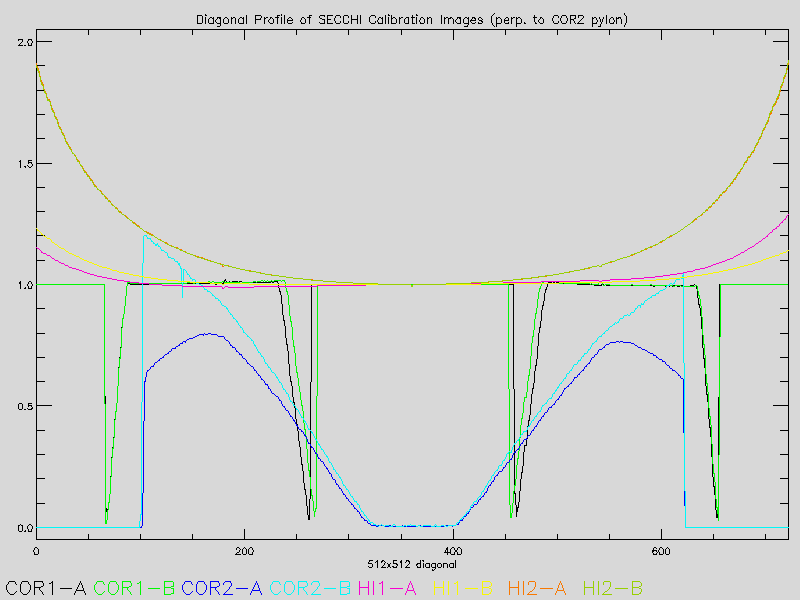Here is a summary of SECCHI flat fields applied in secchi_prep.pro. (There is currently no correction applied to EUVI.)

The COR 1 flat-field/vignetting correction is derived from observations using an opal window built into the aperture door. An improved flat field correction was installed on July 27, 2009. This improved correction adjusts for scattered light present in the opal window measurements, and provides better accuracy for the highly vignetted portions of the image near the occulter edge. (W.Thompson, 2010/07/16)
The nominal HI-1 and HI-2 flat fields were derived before launch from measuring the response to a calibration light source as a function of its angular position in the FOV. Unfortunately, the test configuration only permitted the calibration source to be scanned along a single axis through the centreline of the FOV. Then the fitted response was rotated about the assumed optical axis and extrapolated into the corners of the image. This is currently what is in use for HI-2.
For HI-1 a recalculation of the flatfield has been done by analysing the variation in intensity of stars in the background starfield as they pass across the CCD. In order to use the background starfield, a photometric calibration is performed which defines a HI magnitude scale and a conversion between this scale and measured intensity. The photometric calibration uses stellar spectra folded through the instrument response to make initial intensity predictions. However, a secondary prediction method based on the photometric calibration, which blends the R-, V- and B-magnitudes of a star, is derived for stars with no spectral information. To perform this calibration, an initial analysis of the shape of the point spread function was required. This indicated that the PSF for the HI-1s is well approximated by a Gaussian function and does not vary substantially from the centre of the field-of-view to the corners and is essentially constant over time. (Bewsher et al 2010)
